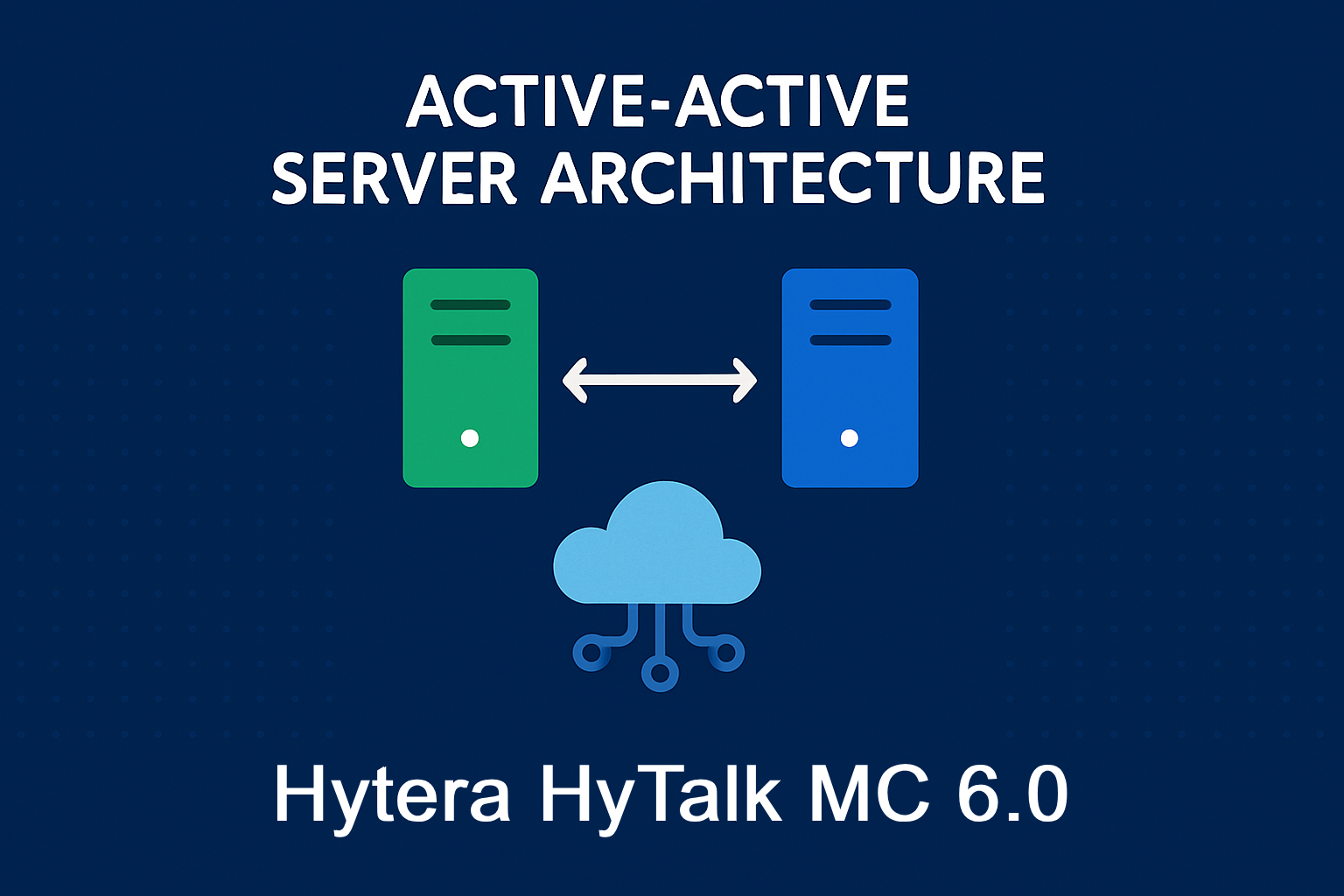From Chaos to Confidence: Why Active-Active Server Architecture Delivers Next-Level Reliability
PoC & MCS
Picture this: you are at a regional marathon coordinating over 200 volunteers spread across aid stations, finish lines, and medical tents. Mid‑race, your single server of the communication system choked under all the radio chatter—water requests, safety alerts, you name it. Volunteers were repeating messages, and the stress was real. That day taught the hard lesson: in mission‑critical communication, downtime isn't just annoying—it can be dangerous. That's why the Active‑Active server architecture in Hytera HyTalk MC 6.0 is considerable. Two servers running side‑by‑side mean your team stays connected, whether you're managing a big public event or running an emergency response center. No more sweaty palms when the network peaks—just smooth, uninterrupted chatter.
Benefit: Your teams get seamless, uninterrupted communications—no more juggling multiple networks or missing crucial data.

What Is Active‑Active Server Architecture?
Think of Active‑Active as having two seasoned leaders co-managing a project—each fully engaged and sharing the workload. In Hytera HyTalk MC 6.0, two identical servers run in parallel, each handling MCPTT calls, high‑definition MCVideo, and rapid MCData transmission. A built‑in policy engine dynamically allocates tasks: one server might handle voice dispatch while the other records video, then they swap responsibilities to balance demand. If one server hits a snag—whether hardware or network—the other immediately covers all active channels. Your field teams won't notice a thing.
Unique Value Point: Both servers work at full capacity, doubling throughput for audio, video, and data—no idle hardware sitting in reserve.
6Why Active‑Active Matters
Early in my career, I coordinated communications for a city‑wide utilities upgrade. During peak testing, our single-server setup faltered, delaying critical voice alerts and data reports. That delay translated into longer downtime for residents. With Active‑Active in Hytera HyTalk MC 6.0, you gain:
Dynamic Load Balancing: Whether it's dozens of simultaneous MCPTT channels or several HD MCVideo streams, traffic is evenly spread to keep latency negligible.
Rapid Recovery: Failover happens in milliseconds—blinks faster than a human eye—so no lost MCData or dropped video clips.
Predictable Quality of Service: Trunk all your voice, video, and data on one network without performance hiccups—ever.
Benefit: Maintain consistent, low-latency communication, even as your operational demands spike.
Active‑Standby vs. Active‑Active
Back on the tech-ops bench, we've all seen Active-Standby, let's have a compare:
Active‑Standby: One server works; the other just sits there, waiting. If the primary fails, you wait seconds or even minutes for a failover, and some sessions may drop.
Active‑Active: Both servers work together from the get‑go. If one server stumbles, the other instantly backs it up-no dropped sessions, no manual intervention.
Unique Value Point: You get a high-capacity, fault‑tolerant backbone for all mission‑critical services—no trade‑offs required.
Benefits for Critical‑Communication Users
Recently, our team led a pilot for a metropolitan transit authority. They ran voice dispatch for train crews, live platform CCTV via MCVideo, and passenger‑flow analytics with MCData—all on our Active‑Active architecture. During a rush‑hour surge, system load tripled. The result? Zero dropped calls, uninterrupted video, and live data updates—no overtime for their IT team, no commuter frustration.
Zero‑Interruption Assurance: First responders, utilities crews, and transit operators enjoy always‑on MCPTT, MCVideo, and MCData channels.
Seamless Maintenance: Apply patches or upgrades node‑by‑node; communication shifts instantly—no full‑system shutdown.
Cost Efficiency: Both servers handle multimedia workloads continually, delivering exceptional hardware ROI.
Future‑Proof Growth: Scaling is as easy as adding another Active‑Active pair—our policy engine self‑balances the load so you can focus on your mission.
Benefit: A unified, scalable, and resilient communications platform that grows with your needs—and gives you peace of mind.
Closing Thoughts
I've seen firsthand how communication failures can escalate risks. Hytera HyTalk MC 6.0's Active‑Active server architecture transforms mission‑critical environments—public safety, utilities, rail, energy—by delivering uninterrupted MCPTT, MCVideo, and MCData services. Empower your teams with confidence that, no matter the situation, your communication backbone remains rock‑solid and ready.






